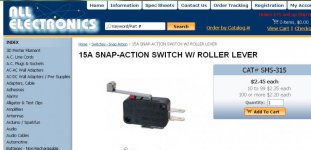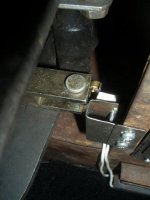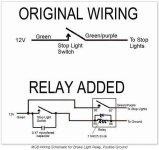AUSMHLY
Yoda
Offline
Heads up to all those who installed the Watson mechanical brake light switch. It will wear out and stop working.
I opened the unit up to find out why it wasn't working.
There are two brass electrical plugs on the outside of the unit. Inside of the case those plugs are flush with the surface of the black plastic plate.
The lever arm moves a brass contact with two protruding points till they come in contact with the two flush brass plugs ends. Over time the siding plate makes a grove in both the plastic and the brass plug ends.
Once it's worn, sometimes it makes full contact sometime it gets hung up and doesn't. No contact, no brake lights.
I filed the grove out of the plastic and the two brass contacts. Now it works like new. However because of the design, it will eventually wear out again.
I'm going to change the Watson light switch out to a metal door jam pin style. Those don't wear out.
Photos of each below.
Watson is with the arm. Door pin is straight
View attachment 36970View attachment 36971
I opened the unit up to find out why it wasn't working.
There are two brass electrical plugs on the outside of the unit. Inside of the case those plugs are flush with the surface of the black plastic plate.
The lever arm moves a brass contact with two protruding points till they come in contact with the two flush brass plugs ends. Over time the siding plate makes a grove in both the plastic and the brass plug ends.
Once it's worn, sometimes it makes full contact sometime it gets hung up and doesn't. No contact, no brake lights.
I filed the grove out of the plastic and the two brass contacts. Now it works like new. However because of the design, it will eventually wear out again.
I'm going to change the Watson light switch out to a metal door jam pin style. Those don't wear out.
Photos of each below.
Watson is with the arm. Door pin is straight
View attachment 36970View attachment 36971
Last edited:

 Hi Guest!
Hi Guest!

 smilie in place of the real @
smilie in place of the real @
 Pretty Please - add it to our Events forum(s) and add to the calendar! >>
Pretty Please - add it to our Events forum(s) and add to the calendar! >> 




